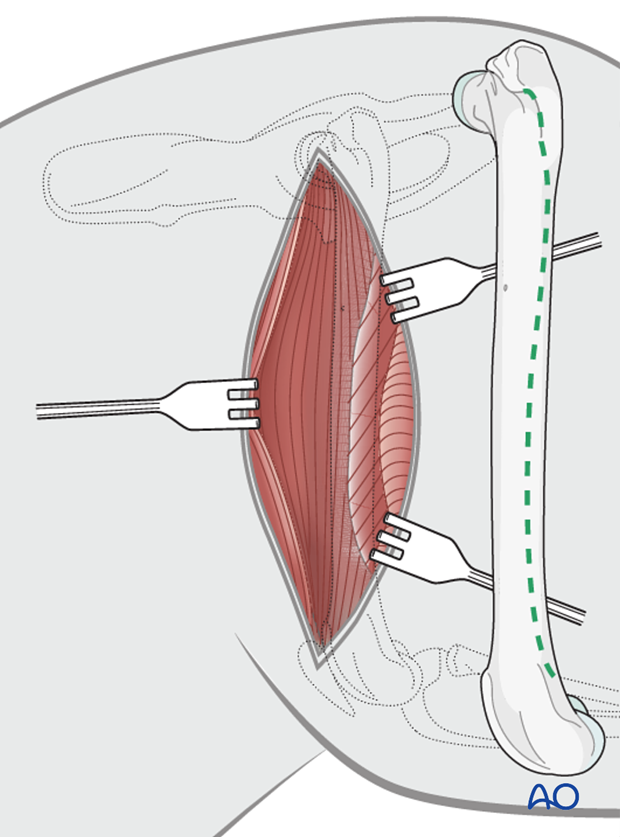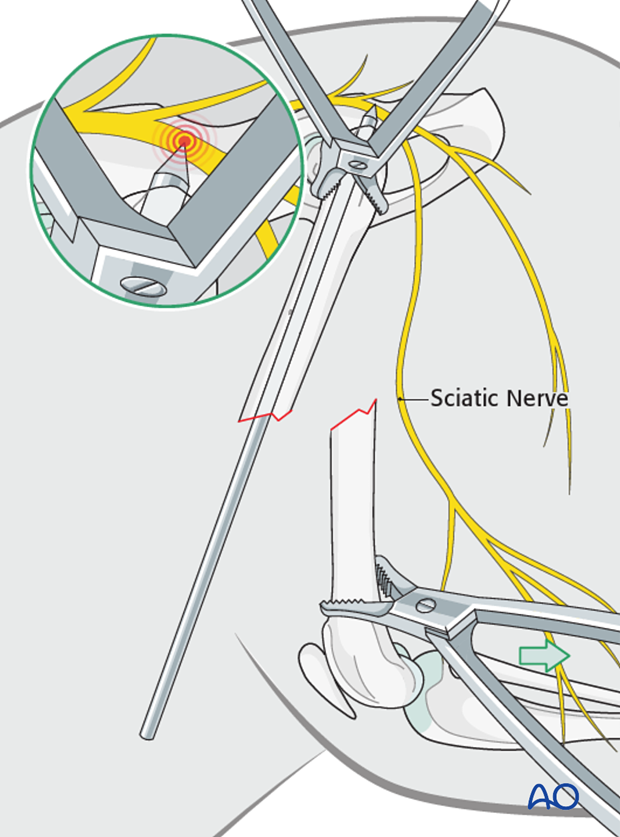Complications with femoral shaft fractures
1. General considerations
The most common complications in femoral shaft fracture are:
- Nonunion
- Osteomyelitis
- Malalignment with malunion
- Sciatic neurapraxia
- Quadriceps contracture
2. Nonunion
Nonunion is the result of a combination of biological and/or mechanical errors that interfere with the bone healing process.
The femur is surrounded by large muscle bellies. Despite this strong biological environment, improper handling of the muscles and soft tissue in combination with poor surgical technique and suboptimal implant selection can lead to femoral nonunion.

3. Malalignment with malunion
Malalignment is a common complication associated with femoral fracture repair. Rotational malalignment in comminuted fractures can occur due to a lack of recognizable landmarks that aid the surgeon in proper alignment of the limb.
Mild loss of length or a moderate malalignment on the sagittal plane (procurvatum or recurvatum) does not affect the patient’s functional outcome, whereas malalignment on the frontal (varus or valgus) or axial plane can severely compromise limb function.
Limb alignment can be assessed by clinical evaluation and intraoperative fluoroscopy or radiographs.
4. Sciatic neurapraxia
Sciatic neurapraxia is most often associated with the retrograde insertion of an intramedullary pin or with proximal intramedullary pin migration.
If retrograde pin insertion is used, the leg should be held in adduction and slight extension while the pin is inserted to avoid sciatic nerve injury.
After placement, the intramedullary pin should be cut short, at or below the level of the trochanter, so it does not interfere with the sciatic nerve.













